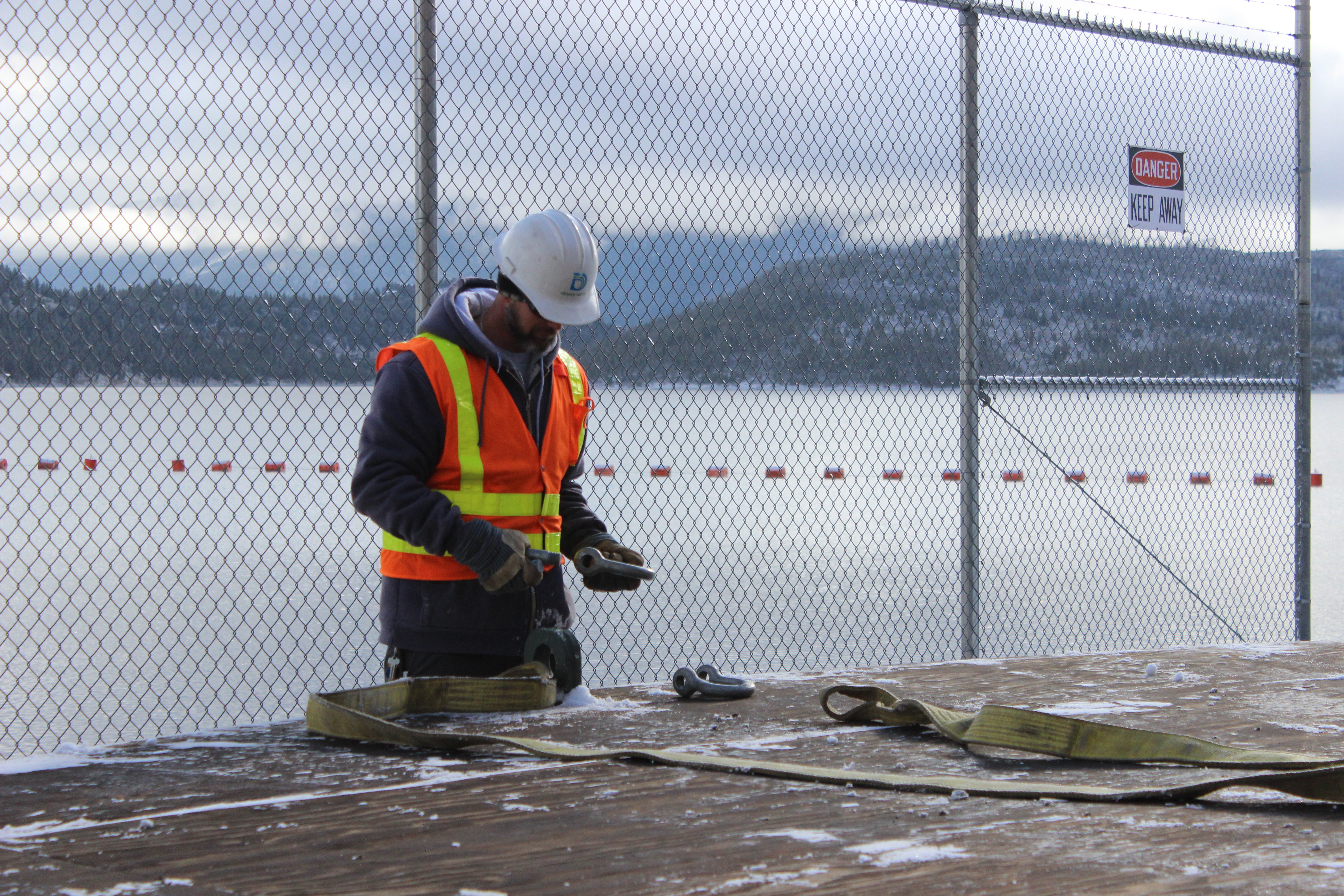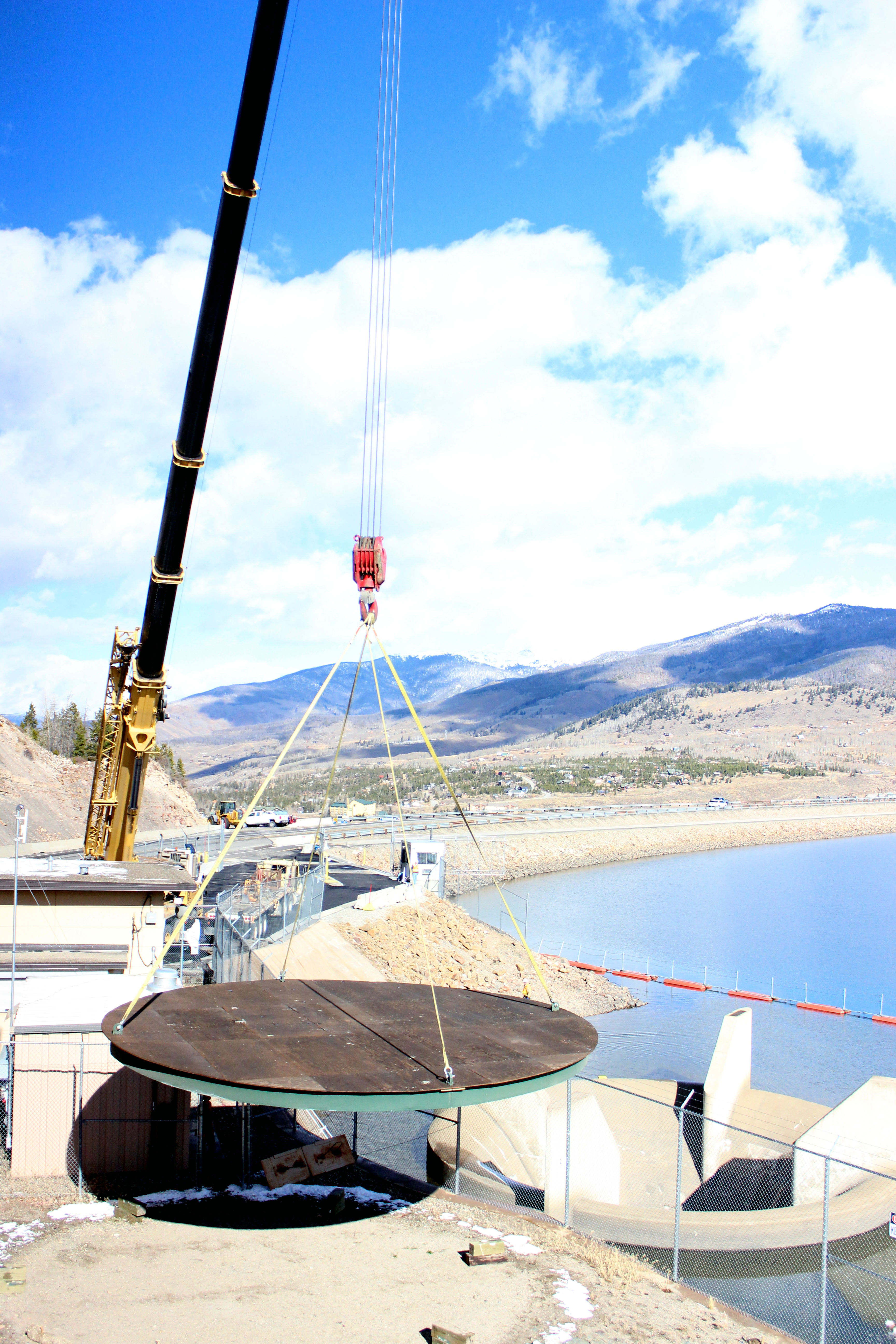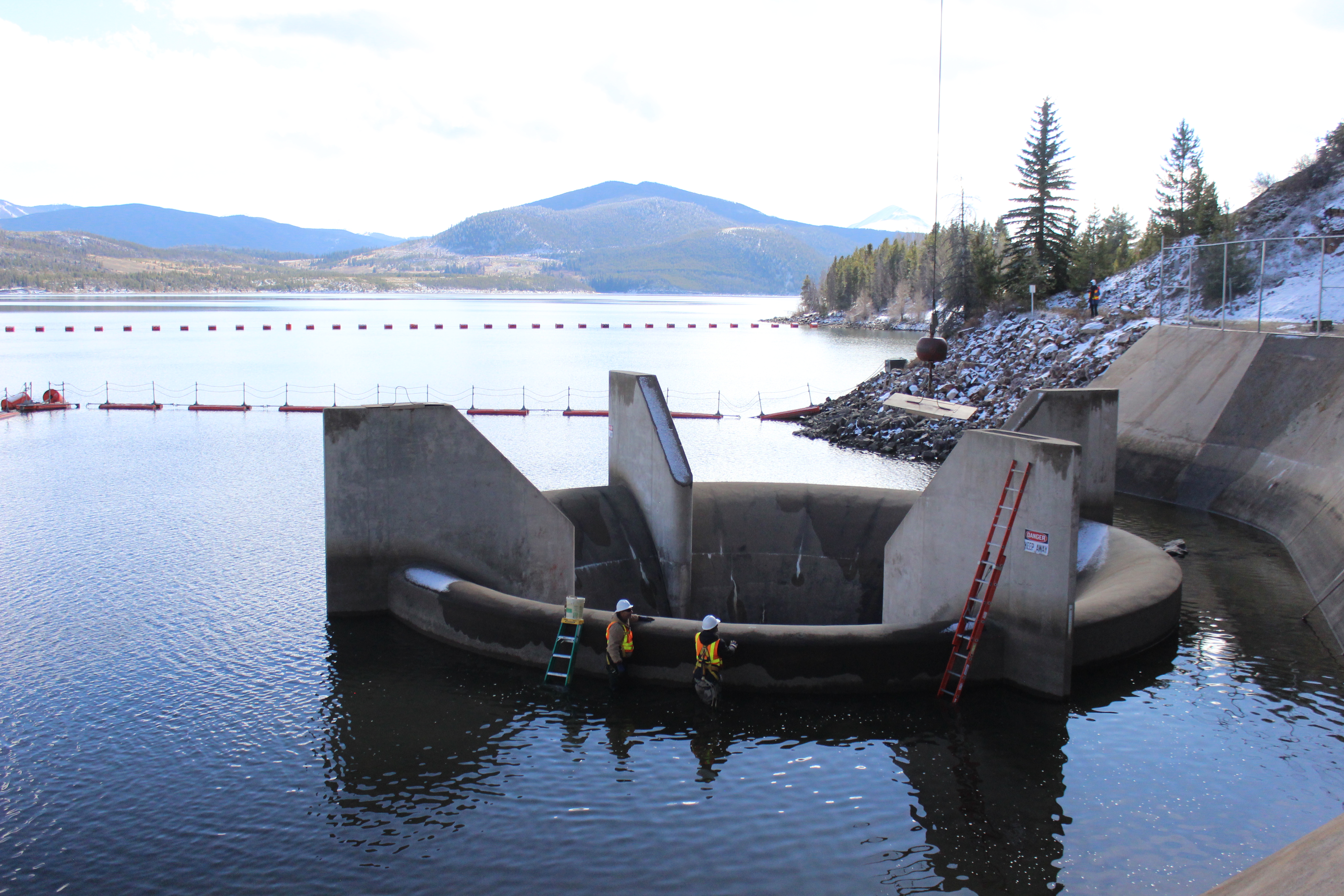
A sure sign of winter: Closing up the Morning Glory spillway
How do you keep debris and cold temperatures from damaging a giant spillway that measures 15 feet in diameter and features a more than 200-foot drop?
Get a really big plug.
Every fall, Denver Water crews place a 6-ton steel plug into the Morning Glory spillway at Dillon Reservoir. The annual activity marks the end of summer and signals the start of winter maintenance season, when Dillon Dam’s caretakers focus on maintenance of the structure’s interior facilities.
The plug serves a primary and secondary function — first, it prevents cold air from entering the spillway, which could damage the outlet works and take hours of manual labor to melt the ice that builds up. It also helps prevent chunks of ice and snow from falling into the spillway and crashing more than 200 feet below.
Exact timing of the operation varies from year to year, though the rule of thumb is to do it when the reservoir’s water level is at least 4 feet below the crest of the spillway.
“That way, we have time to get back in here and remove the plug should we get sudden, unexpected inflows,” said Rick Geise, caretaker at Dillon Reservoir.
The cap was placed using a mobile crane provided and crewed by Terry’s Crane and Rigging out of Salida, Colorado; the company has provided this service to Denver Water for more than 15 years. Denver Water employees Rick Geise, Donald McCreer and Nate Hurlbut assisted, overseen by dam and hydropower plant supervisor John Blackwell.
“One of the best things about Dillon’s operations is its complexity. My team and I are involved in so many different types of projects that our job is never boring,” said Blackwell. “With good planning and the ability to adapt, projects like this one are not necessarily difficult — especially when you have a crew who are experts in performing their tasks safely and efficiently like we do here.”
Come early spring, Blackwell, the crane and crew will be back again to pull the plug, signaling the start of the summer maintenance season, where the dam’s crews will focus on larger capital improvement projects to keep the facility in tip-top condition.
The Morning Glory spillway is one of four ways water leaves Dillon Reservoir. Those ways include evaporation, absorption, the Roberts Tunnel, and the outlet works to the Blue River, which includes the Morning Glory spillway.
The outlet works facility for Dillon Dam was first commissioned in 1964. It includes the Morning Glory spillway and one 15-foot horizontal slide gate. This large gate is the primary barrier between the reservoir and another set of four smaller slide gates that are the final control point before water is released into the Blue River at the base of the dam.
Denver Water manages outflows by adjusting the series of gates. When the reservoir is full, water flows into the Morning Glory spillway out to the Blue River — serving as a final release valve in the system.




